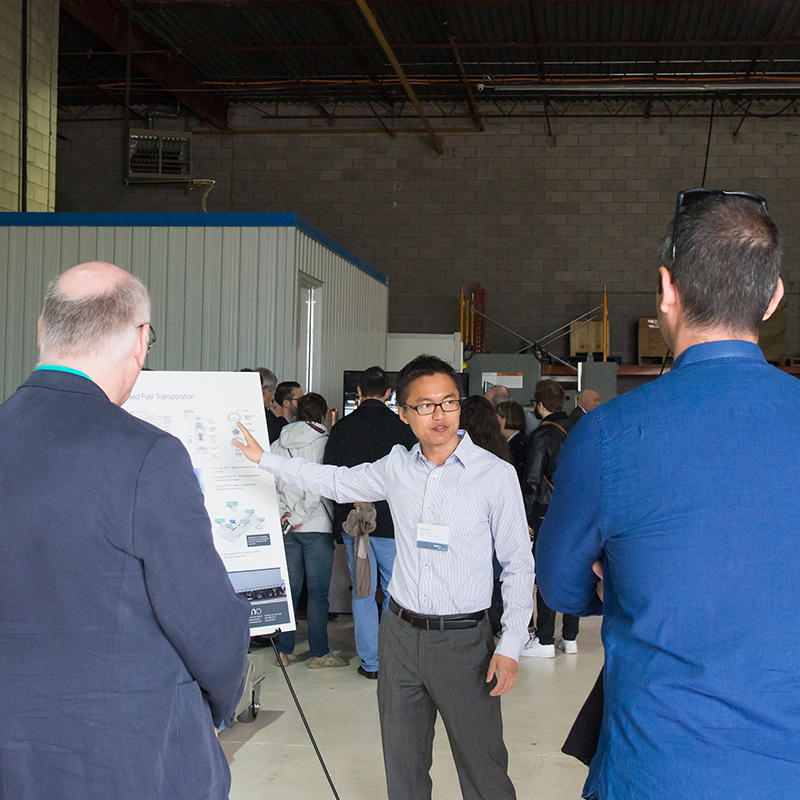In May, the NWMO, Ontario Power Generation and Canadian Nuclear Laboratories sponsored the sixth International Workshop on Long-Term Prediction of Corrosion Damage in Nuclear Waste Systems. The four-day conference, which was also supported by the European Federation of Corrosion, was held in Toronto.
The conference brought together some 70 researchers and industry professionals from more than a dozen countries. Attendees included representatives from the national waste management organizations of Canada, the Czech Republic, France, Japan, Sweden, Switzerland, and the United Kingdom.
“Minimizing corrosion plays a huge role in safely managing used nuclear fuel over the long term,” explains Peter Keech, the NWMO’s Manager of Engineered-Barrier Science.
“That is because the containers in which the fuel is stored use pressure vessel grade steel to keep their contents from being crushed in the event of a future glaciation. On their own, these steels have a level of corrosion resistance and will provide containment for many thousands of years.
“However, to provide an extra level of protection, many container designs also include an outer layer of copper. Copper is ideal because it is known to be especially durable under deep rock conditions where there is no oxygen to cause corrosion.”
“It is really exciting to see how much international co-operation there is in this crucial aspect of container design,” adds David Hall, Corrosion Scientist at the NWMO. “It is also highly gratifying to see how much international interest the NWMO’s design is attracting. Unlike other designs, in which the copper exterior forms a separate layer, we directly apply the copper to the steel container, thus eliminating any gap between the two metals.”
In addition to nearly 40 presentations, there were 30 poster presentations highlighting the work of students and other researchers in the field. Five of the students, Daniel Guo, Taylor Martino, Ryan Morco, Thalia Standish, and Joseph Turnbull, are studying under professors whose research the NWMO jointly funds with the Natural Sciences and Engineering Research Council of Canada.
Canada's plan
The NWMO Helps Host International Conference on Corrosion

Conference attendees from the 2016 International Workshop on Long-Term Prediction of Corrosion Damage in Nuclear Waste Systems visit the NWMO's proof testing facilities.
About the NWMO
The Nuclear Waste Management Organization (NWMO) is a not-for-profit organization tasked with the safe, long-term management of Canada’s used nuclear fuel inside a deep geological repository, in a manner that protects people and the environment for generations to come.
Founded in 2002, the NWMO has been guided for more than 20 years by a dedicated team of world-class scientists, engineers and Indigenous Knowledge Holders that are developing innovative and collaborative solutions for nuclear waste management. Canada’s plan will only proceed in an area with informed and willing hosts, where the municipality, First Nation and Métis communities, and others in the area are working together to implement it. The NWMO plans to select a site in 2024, and two areas remain in our site selection process: the Wabigoon Lake Ojibway Nation-Ignace area in northwestern Ontario and the Saugeen Ojibway Nation-South Bruce area in southern Ontario.
The Nuclear Waste Management Organization (NWMO) is a not-for-profit organization tasked with the safe, long-term management of Canada’s used nuclear fuel inside a deep geological repository, in a manner that protects people and the environment for generations to come.
Founded in 2002, the NWMO has been guided for more than 20 years by a dedicated team of world-class scientists, engineers and Indigenous Knowledge Holders that are developing innovative and collaborative solutions for nuclear waste management. Canada’s plan will only proceed in an area with informed and willing hosts, where the municipality, First Nation and Métis communities, and others in the area are working together to implement it. The NWMO plans to select a site in 2024, and two areas remain in our site selection process: the Wabigoon Lake Ojibway Nation-Ignace area in northwestern Ontario and the Saugeen Ojibway Nation-South Bruce area in southern Ontario.
